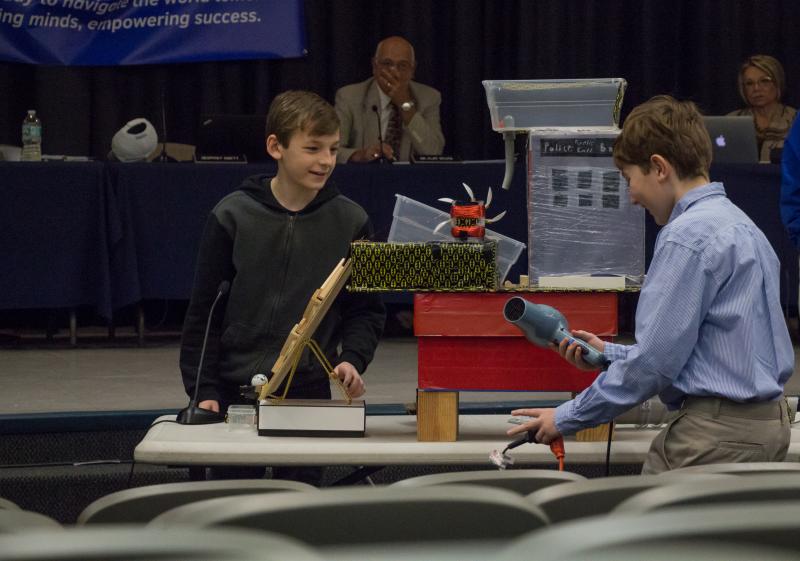Two middle-schoolers vie for a chance at international science fair
Two Wareham 12-year-olds and their their homemade hydroelectric generator could represent the United States in an international science competition this fall.
After placing first in the middle school’s Science & Engineering Fair, middle-schoolers Alex Lambert and James Fitzgerald competed at the regional level at Regis College in Weston, Massachusetts. The pair placed third, allowing them to compete at the state fair, which will be held at Worcester Technical High School June 6.
Alex Lambert’s mother Donna Lambert said the two scored so highly at regionals, they were eligible for a Broadcom Math, Applied Science, Technology and Engineering Rising Stars (MASTERS) nomination to compete in an online semifinal. The 30 finalists from the online semifinal will be flown out to California to compete in the MASTERS final, an international middle school science and engineering competition, in the fall.
Lambert said she is not concerned about how the two will do on the online competition.
“They are really great in person, but they are exceptional writers, as well,” Lambert said.
Alex Lambert and Fitzgerald demonstrated for the School Committee and small audience Wednesday night their award-winning science experiment. They created a miniature hydroelectric generator that operates like a Rube Goldberg machine. Lambert explained that they decided to make the generator, based on what would be practical in the modern age.
“We thought about how fossil fuels are hazardous, and are diminishing,” Lambert said. “The earth is covered in approximately 71 percent of water, so we could exploit that, and use that as a renewable energy source.”
Lambert said he and Fitzgerald tried to replicate a microhydropower system, which is a small, highly efficient hydroelectric generator that operates in a stream, rather than a larger body of water. These systems generate up to 100 kilowatts of energy, enough to power about 10 large homes.
“The maximum amount of voltage we’ve been able to generate so far is approximately 1.5 volts, give or take,” Lambert said. “We’ve been trying to improve upon this.”












